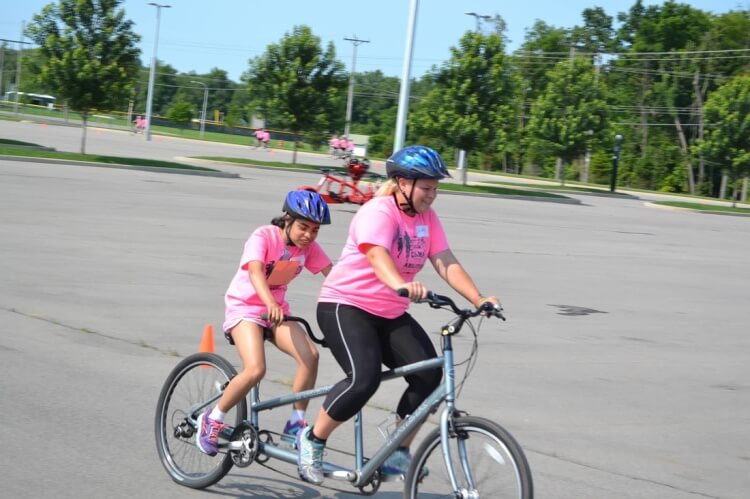50 Million Strong (50MS) includes all children as seen on the photo on the 50MS literature from SHAPE America. This image depicts children that come from diverse backgrounds with a range of skills and abilities. Our job as educators is to address the needs of all students, including those with disabilities. Because many physical education teachers have only one or two courses related to teaching inclusively, programming can be difficult. We have assembled a few important points that every teacher must keep in mind:
- Children with disabilities are children first!
- All children must have access to the curriculum and be offered similar units of instruction as their peers even if they are in a self-contained, modified, smaller class, or an inclusive class. In other words, physical therapy does not count as physical education.
- When conducting assessments, they must be assessed with everyone else and their scores must count towards educational outcomes.
- If they have a paraeducator who works with them in physical education, the para should be trained to ensure that the child is safe and receives the best education.
- Adapted Physical Education (APE) is a service NOT a placement. APE can be delivered in any setting. It is how the class is taught; not where it is taught.
- Lastly, the Universal Design for Learning approach should be adopted as a teaching strategy so that every child who walks in to the gymnasium will access the curriculum.

The Universal Design for Learning (UDL) is a teaching approach that takes into account every child and their learning style. It started in 1990 with the passage of the American’s with Disabilities Act, addressing the primary barriers to educational opportunity.
UDL embraces the ethos that every child be included, and have access to the general education curriculum. Variations in equipment, rules, instruction and environment are planned when the lesson is created and NOT as an afterthought at the bottom of a lesson plan.
Every child will be able to find the equipment they need with rules and instruction that meet their needs. For example, in a 6th grade volleyball unit, there will be many types of balls with different colors, textures, and weights. The students can practice serving from various lines on the court; some closer and some further away. The players can catch the ball, allow a bounce or walk up to the net if necessary. They may have more than three hits or plays on one side. The assessment for volleyball would be done with the students’ preference of ball and variation in distance from the net.
Although the UDL approach is not always taught in professional preparation courses in physical education, once it is embraced, everyone wins! More resources are listed below:
Resources
Books:
Block, M.E. (Ed.) (2016). A teacher’s guide to including students with disabilities in general physical education (4th ed). Baltimore, MD: Paul H. Brookes.
Grenier, M. (2013). Physical education for children with autism. Champaign, IL: Human Kinetics.
Hodge, S., Murata, N., Block, M., & Lieberman, L.J. (2003) Case studies in adapted physical education. Scottsdale, AZ: Holcom Hathaway Publishers.
Lieberman, L.J., & Houston-Wilson, C. (2009). Strategies for Inclusion (2nd ed). Champaign, IL: Human Kinetics.
Web sites:
Inspire out of Texas Woman’s University provides a wealth of information about all disabilities and physical education, sports and aquatics
Camp Abilities is an educational sports camp for children with visual impairments. This web site provides instructional ideas and videos to teach children with VI.
The United States Association for Blind Athletes is the governing body of goal ball and this site provides teaching tips and videos for teachers.
The National Center on Physical Activity and Health for people with disabilities is an organization to help promote active and healthy lifestyles for all people
This is the web site to SHAPE and has some resources and position papers to help and support adapted physical education
